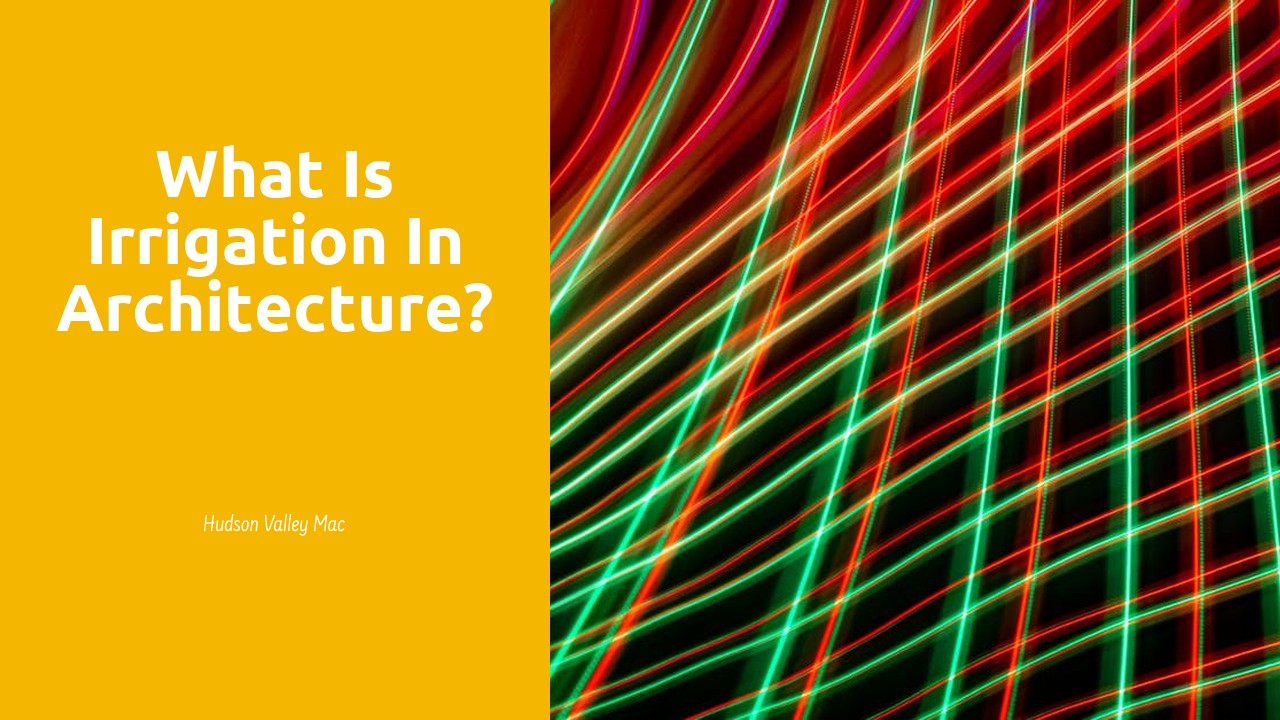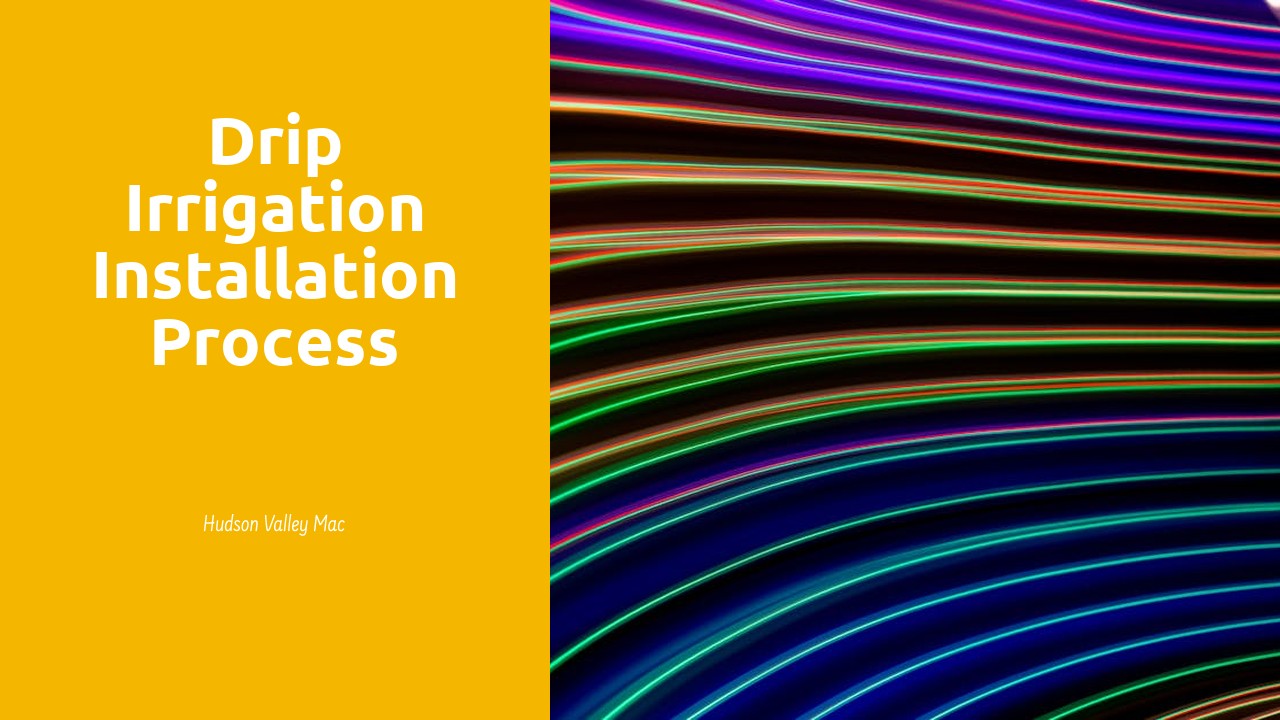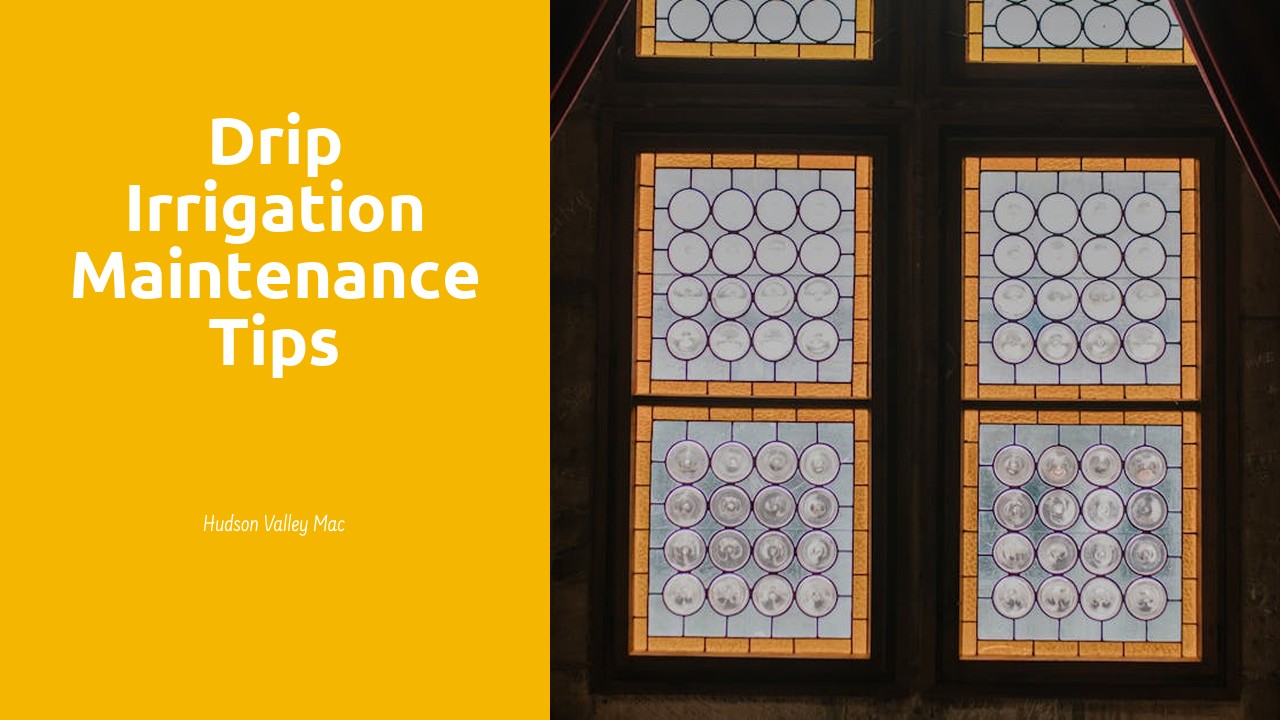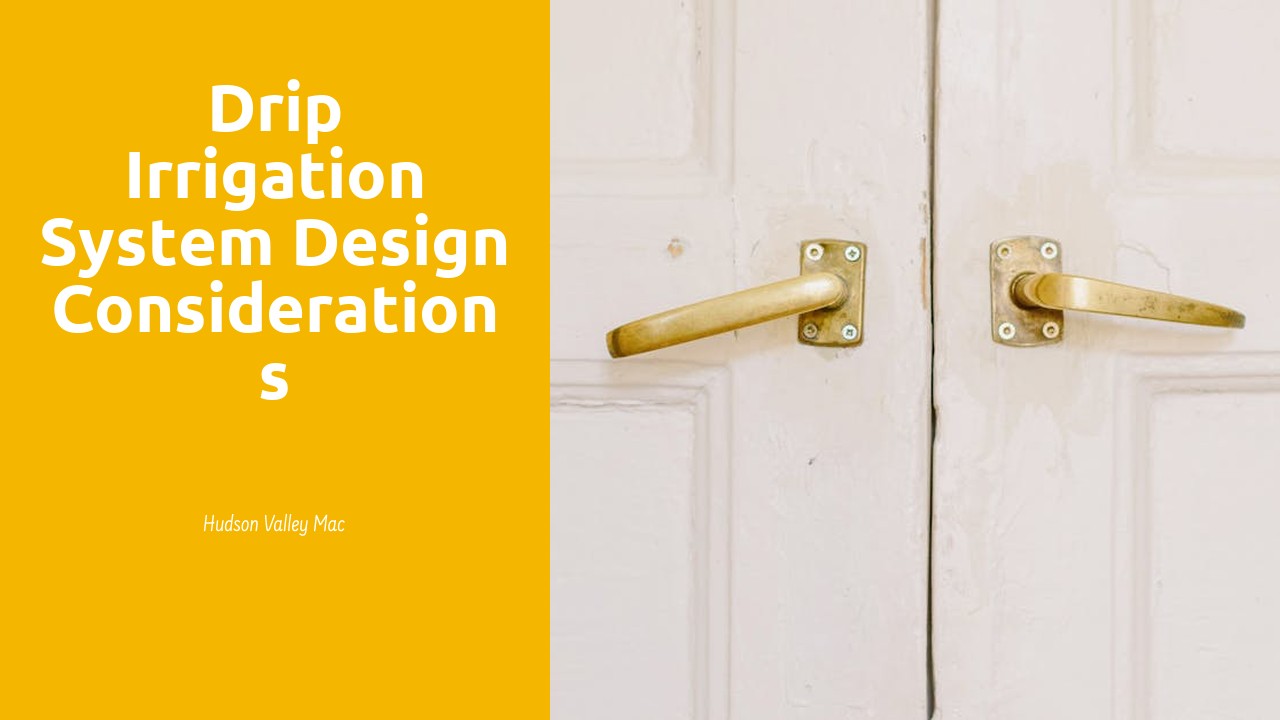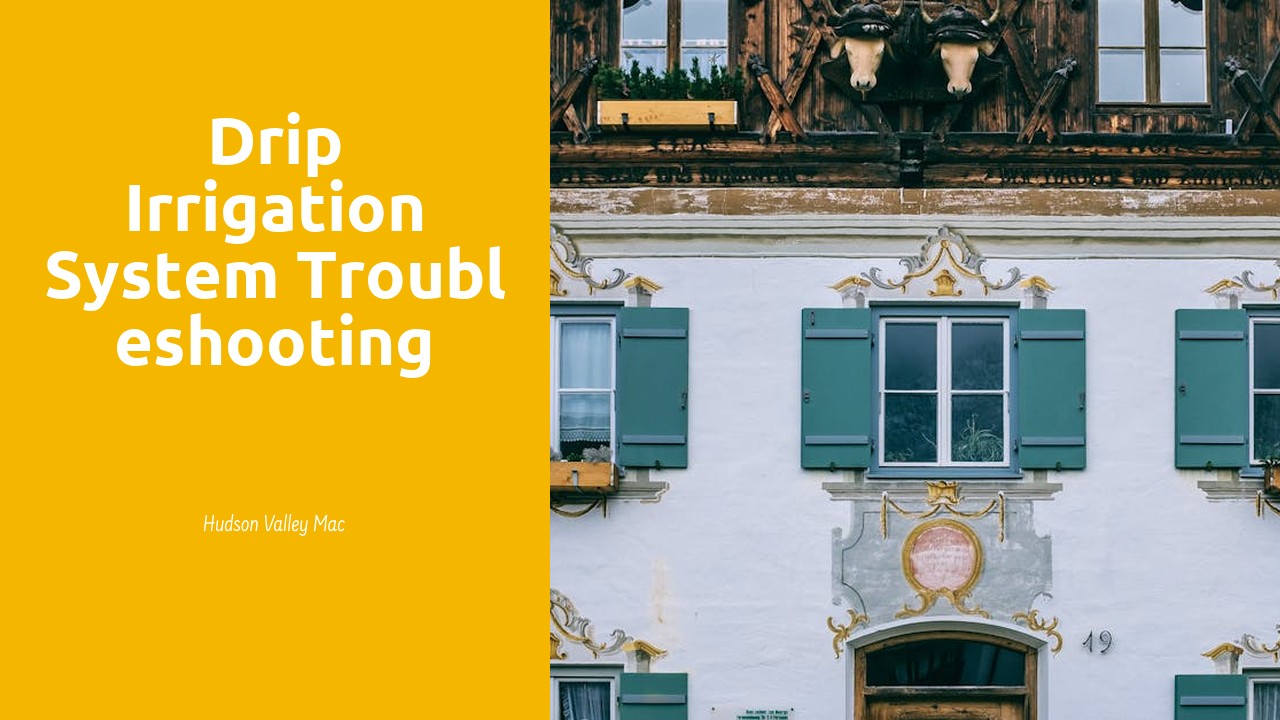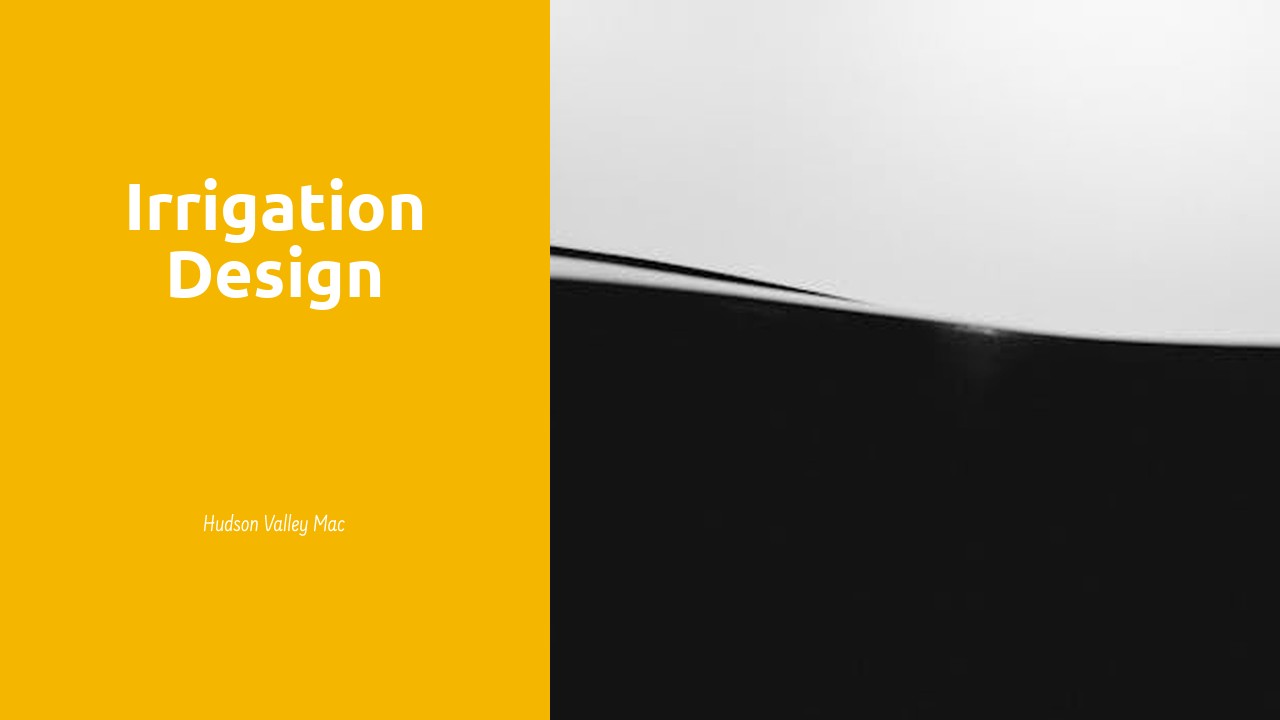
Irrigation Design
Table Of Contents
Hudson Valley Mac provides top-notch Irrigation Design services to clients in the Canadian market. Their team of experts offers personalized solutions tailored to the specific needs of each individual customer. They use the latest technology and techniques to ensure efficient irrigation systems that conserve water and promote healthy plant growth. With Hudson Valley Mac, clients can rest assured that their irrigation design will be expertly planned and implemented, resulting in a sustainable and environmentally-friendly landscape. Trust Hudson Valley Mac for all your irrigation design needs in Canada.
Maximizing Water Efficiency in Irrigation Design
One key aspect of irrigation design is maximizing water efficiency. This involves carefully planning and implementing irrigation systems that minimize water wastage while still meeting the needs of the landscape. By utilizing drip irrigation techniques, for example, water can be delivered directly to the roots of plants, reducing evaporation and runoff.
Another way to enhance water efficiency in irrigation design is by incorporating smart irrigation controllers. These controllers can be programmed to adjust watering schedules based on factors such as weather conditions, soil moisture levels, and plant water requirements. This dynamic approach ensures that water is only applied when and where it is truly needed, leading to significant water savings over time.
Incorporating Rainwater Harvesting Techniques
Rainwater harvesting techniques play a crucial role in sustainable irrigation design. By capturing and storing rainwater, we can reduce the dependency on traditional water sources, such as municipal water supplies or groundwater. This not only helps in conserving water resources but also minimizes water costs for irrigation purposes. Incorporating rainwater harvesting systems can significantly contribute to the overall water efficiency of an irrigation setup.
There are various methods to implement rainwater harvesting, including rooftop collection systems, rain gardens, and storage tanks. Each technique can be tailored to suit the specific needs and scale of the irrigation system. By integrating these methods into the irrigation design, landscape professionals can effectively utilize natural resources to meet the water demands of plants and crops. Additionally, rainwater harvesting techniques promote environmental sustainability by reducing runoff and erosion, while also helping to mitigate flooding in urban areas.
Addressing Common Challenges in Irrigation Design
Addressing common challenges in irrigation design requires a deep understanding of the landscape's topography and the water requirements of the vegetation. When dealing with sloped landscapes, it is crucial to implement proper drainage systems to prevent water runoff and erosion. Designing irrigation systems that accommodate the natural contours of the land can help distribute water evenly and efficiently across the terrain.
Another common challenge in irrigation design is ensuring sustainability in watering practices. Employing soil moisture sensors can provide real-time data on the moisture levels in the soil, enabling precise irrigation scheduling. By utilizing these sensors, water usage can be optimized, leading to healthier plants and reduced water wastage. Enhancing sustainability through innovative irrigation practices not only benefits the environment but also contributes to cost savings in the long run.
Dealing with Sloped Landscapes in Irrigation Planning
When designing irrigation systems for sloped landscapes, it is essential to factor in the natural incline of the terrain to ensure proper water distribution. Failure to account for the slope can lead to water runoff, erosion, and inefficient watering. One effective strategy is to utilize drip irrigation or soaker hoses, as these methods deliver water directly to the base of plants, reducing runoff and ensuring optimal absorption by the soil.
In addition to selecting appropriate irrigation methods, it is crucial to divide the slope into sections based on the degree of incline and water requirements of the vegetation in each area. This segmentation allows for customized watering schedules and ensures that plants receive adequate moisture without the risk of overwatering or underwatering. By carefully planning the layout of irrigation zones on sloped landscapes, landscapers and gardeners can maximize water efficiency while promoting healthy plant growth.
Enhancing Sustainability Through Irrigation Practices
Enhancing sustainability through irrigation practices is vital in modern agriculture. By adopting water-efficient irrigation methods, farmers can reduce water wastage and minimize the environmental impact of farming operations. Techniques such as drip irrigation and soil moisture sensors enable precise watering, ensuring that plants receive just the right amount of water they need, without excess runoff or evaporation. This not only conserves water but also promotes healthier plant growth and yields.
In addition to water efficiency, incorporating sustainable practices in irrigation design can also help in preserving soil health. Avoiding over-irrigation and implementing proper drainage systems can prevent soil erosion and nutrient leaching, maintaining soil fertility for long-term crop production. Furthermore, by utilizing rainwater harvesting techniques in conjunction with irrigation systems, farmers can reduce dependency on scarce water resources and enhance the overall sustainability of their agricultural operations.
Utilizing Soil Moisture Sensors for Optimal Watering
Soil moisture sensors have revolutionized the way we approach irrigation practices, providing a precise and efficient way to optimize watering schedules. These sensors measure the amount of moisture in the soil, allowing for tailored irrigation that meets the specific needs of plants. By using soil moisture sensors, gardeners and farmers can avoid both overwatering and underwatering, leading to healthier plants and increased water conservation.
One of the key advantages of utilizing soil moisture sensors is the ability to automate the irrigation process. With sensor data informing when to water based on actual soil conditions rather than a fixed schedule, there is a reduction in water wastage and energy usage. This not only benefits the environment by promoting sustainable water usage but also offers cost savings for irrigation systems in the long run. By incorporating soil moisture sensors into irrigation design, we can move towards more efficient and eco-friendly practices in agriculture and landscaping.
FAQS
What are some ways to maximize water efficiency in irrigation design?
To maximize water efficiency in irrigation design, consider using drip irrigation systems, scheduling watering times during early morning or late evening to reduce evaporation, and incorporating smart irrigation controllers that adjust watering based on weather conditions.
How can rainwater harvesting techniques be incorporated into irrigation design?
Rainwater harvesting techniques can be incorporated into irrigation design by collecting rainwater from roofs or other surfaces in storage tanks, using it for irrigation purposes, and integrating it with irrigation systems to supplement water supply.
What are some common challenges in irrigation design and how can they be addressed?
Common challenges in irrigation design include water waste, inefficient watering practices, and uneven distribution of water. These challenges can be addressed by conducting regular maintenance of irrigation systems, monitoring water usage, and adjusting irrigation schedules as needed.
How can irrigation planning be optimized for sloped landscapes?
When dealing with sloped landscapes in irrigation planning, consider using drip irrigation systems that deliver water directly to plant roots, creating terraces or berms to minimize water runoff, and installing check valves to prevent water from flowing downhill too quickly.
How can sustainability be enhanced through irrigation practices?
Sustainability can be enhanced through irrigation practices by utilizing efficient irrigation techniques, such as drip irrigation or micro-sprinklers, incorporating rainwater harvesting systems, and selecting drought-resistant plants that require less water.
How can soil moisture sensors be utilized for optimal watering in irrigation design?
Soil moisture sensors can be utilized in irrigation design to monitor the moisture levels in the soil and provide real-time data to adjust watering schedules accordingly. This helps prevent overwatering, reduces water waste, and ensures plants receive the right amount of water they need.

